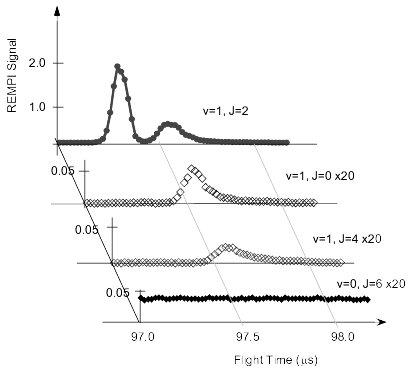Greg O. Sitz
Professor
Physics Department
University of Texas
Austin, Texas 78712
- Office: RLM 10.313 :: Lab: RLM 2.420
- Office Phone: (512) 471-0701
- Lab Phone: (512) 471-0788
- Fax: (512) 471-9637
- Email: gositz@physics.utexas.edu
Greg O. Sitz
|
 Apparatus Apparatus |
 H2 Scattering H2 Scattering |
 D2 Scattering D2 Scattering |
 N2 Scattering N2 Scattering |
The chamber off to the right is the source chamber and it contains the nozzle and skimmer. In between the source and main chambers there is a small buffer chamber which houses the chopper (a small disk with slits that rotates around 300 Hz). The tall cylinder on the left of the picture is a liquid nitrogen trap. The molecular beam is created by a pulsed nozzle that works like a fuel injector in a car. Inside the nozzle is 2 or 3 atm of gas and when the aperture opens (solenoid driven) the gas rushes out into the vacuum in a supersonic expansion. The molecules in the beam will be very cold rotationally (about 6 K for Nitrogen) and have a narrow velocity distribution. This means that the molecules incident on the surface all have nearly the same velocity. By heating the nozzle or mixing the gas in Helium or Hydrogen we can change that velocity and study the dependence of the scattered distributions on incident energy. |
 |
Time-of-flight data for Raman pumped D2(v=1,J=2) scattering from Cu(100) showing both elastic and inelastic scattering. |